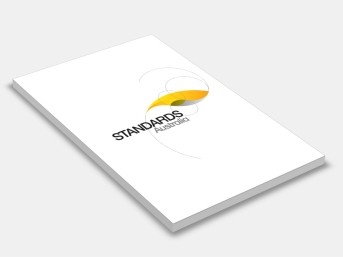AS 3958.1-2007 Ceramic tiles, Part 1: Guide to the installation of ceramic tiles
Standards Australia
This Standard incorporates Amendment No. 1 (March 2010). The changes required by the Amendment are indicated in the text by a marginal bar and amendment number against the clause, note, table, figure or part thereof affected.
This Standard is part of a series that covers ceramic tiles, as follows:
AS 3958 Ceramic tiles
AS 3958.1 Guide to the installation of ceramic tiles (this Standard)
AS 3958.2 Guide to the selection of a ceramic tilting system
AS 3958.3 Guide to the selection of a stone tiling system
Figure 5.1 has been reproduced, with permission, from BS 5385.4, Wall and floor tiling, Part 3: Code of practice for tiling and mosaics in specific conditions.
This Standard has been reviewed concurrently with the significant changes to AS 4992.1 and AS 4992.2 and with the current AS 2358 in mind. These significant changes are mainly due to the fact that some products that were classified as organic-based adhesives are now classified as cementitious adhesives. The new adhesive Standards are far more demanding in terms of performance. The concept of thin-bed and thick-bed adhesives will be subject to change.
Where the term ‘screed’ is used in this document, it primarily refers to non-proprietary screeds. A wide range of proprietary screeds have been developed since this Standard was first published. When using proprietary materials, it is quite probable that the next tiling phase can be undertaken within a shorter timeframe than is recommended in this Standard. Advice should be sought from the manufacturers of the products involved.
Originated as AS 3958.1—1991.
This Standard provides guidance on the preparation of the background and the fixing and grouting of floor and wall tiles and mosaic tiles. It also provides information on the application of tile in swimming pools, gradients on floors, screeds and rendering, and cleaning and maintenance.
Specialized applications such as the need for chemical resistance and the use of epoxies are not considered in detail.
This Standard applies to all work involved in the internal and external laying of ceramic wall and floor tiles. It deals with the types and classes of backgrounds and substrates and their suitability to receive a bedded finish using the following fixing methods, which are also described in the relevant sections:
(a) Bedding in sand/cement mortar on rendering or as a direct bedding method.
(b) Bedding in cement-based adhesives on an intermediate substrate or as a direct bedding method.
(c) Bedding in organic-based adhesives on an intermediate substrate or as a direct bedding method.
(d) Bedding in other adhesives on an intermediate substrate or as a direct bedding method.
Mosaic tiles constitute a specialized form of tiling and those aspects of fixing that require particular treatment are dealt with in this Standard. The recommendations relate to mosaics assembled in the form of sheets, the separate pieces being glued either face down to paper or bedding, side down to nylon adhesive strips, fabric net or other material.
Where tiling is to be carried out in wet areas, the recommendations in AS 3740 should be considered, particularly with regard to the preparation of the background. The designer should make know to the tiling contractor any structural or environmental
conditions such as excessive deflection or the likelihood of excessive or delayed shrinkage onset of the substrate.
Recommendations for tiling in situations where with specific functional or environmental requirements are provided in BS 5385.4.
Contents:
Section 1: Scope And General
Section 2: Materials
Section 3: Tiling Systems
Section 4: Preparation Of Backgrounds For Tiling
Section 5: Installation Of Ceramic Tiles
Appendixa: Non-Proprietary Screeds
Appendix B: Sand/Cement Rendering
Appendix C: Cleaning And Maintenance
Appendix D: Falls In Floor Finishes
Appendix E: Wet Conditions (Continuously Immersed)
Fixing of Ceramic, Natural and Reconstituted Stone Tiles.
BD-044
Association of Consulting Engineers Australia; Australian Chamber of Commerce and Industry; Australian Industry Group; Australian Stone Advisory Association; Australian Tile Council; Building Diagnostics; CSIRO, Manufacturing and Infrastructure Technology; Ceramic Tile Manufacturers Association; Master Builders Australia; Master Tile Layers Association of SA; Opus International Consultants Limited New Zealand; Plastics and Chemicals Industries Association; TAFE N.S.W..
